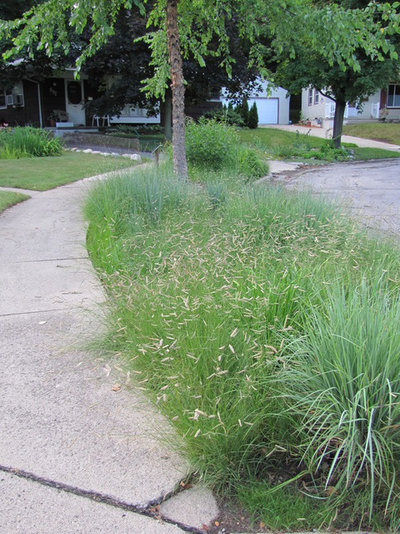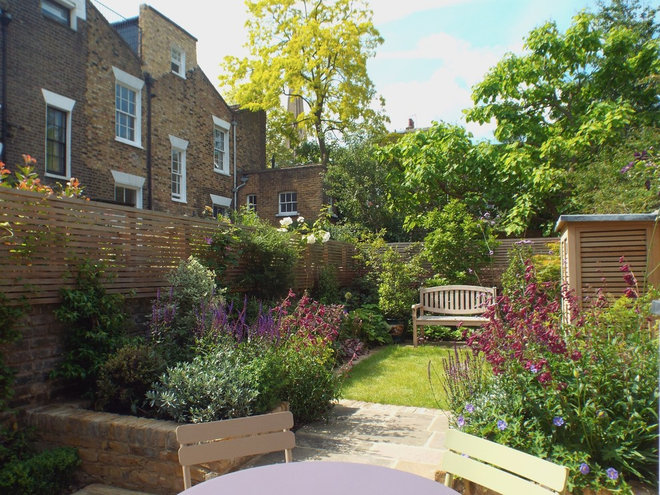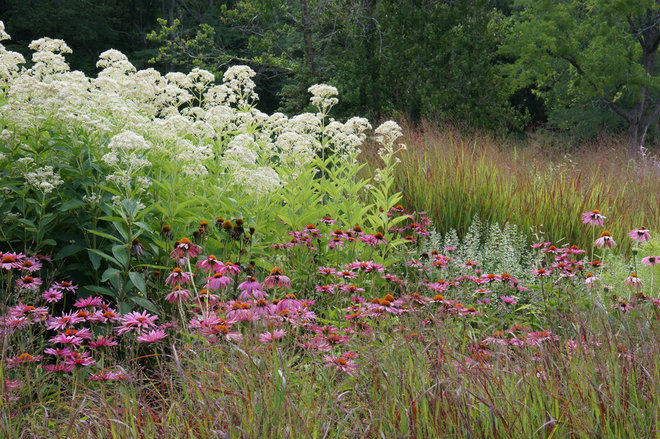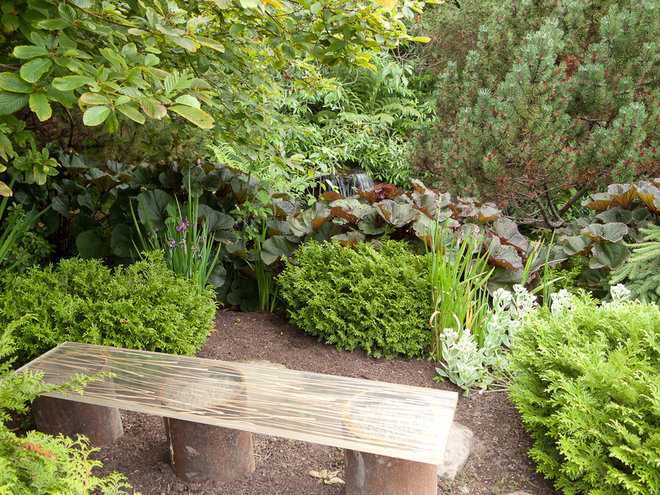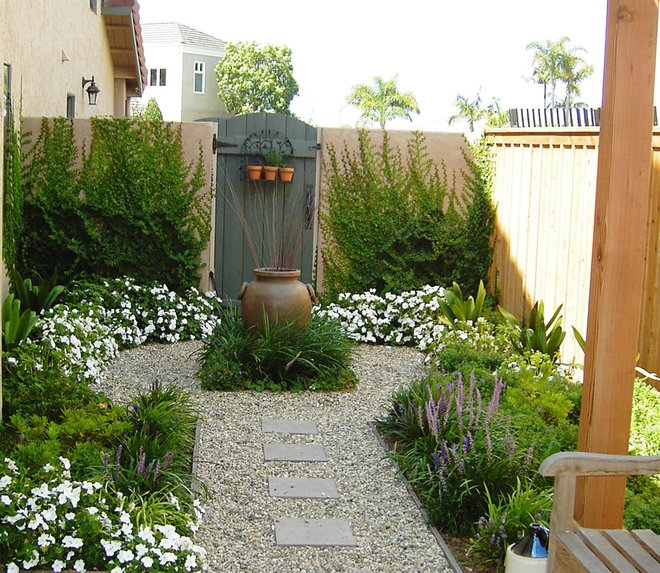4 Tips for Designing a Wildlife-Friendly Small Garden
1. Keep it simple but plant it thick. Accept your garden’s limitations and work with them by keeping plantings simple. It’s going to look chaotic if you have 30 plant species in 100 square feet. Instead, choose 10 to 12 species, or fewer, and try to have two or three of them be a grass or sedge.
Grasses and sedges provide winter shelter and nesting material for birds, and they tend to outcompete weeds with their fibrous root systems and soil-shading nature. These will become your base layer that ties everything together in a cohesive way. Match them to your soil, light conditions and ecoregion for best long-term performance. Grasses generally need full sun, whereas sedges are more adaptable.
Sideoats grama (Bouteloua curtipendula, USDA zones 3 to 9; find your zone), prairie dropseed (Sporobolus heterolepis, zones 3 to 8), little bluestem (Schizachyrium scoparium, zones 2a to 9b) and sedges like Sprengel’s sedge (Carex sprengelii, zones 3 to 5) or Muskingum sedge (C. muskingumensis, zones 4 to 9), also called palm sedge, are good options.
Plants shown: Little bluestem, hairy grama (Bouteloua hirsuta), blue grama (B. gracilis),sideoats grama and prairie dropseed
Think about including plants that will provide you with blooms throughout the year. Consider dwarf false indigo (Amorpha nana, zones 3 to 7) for mid- to late spring, purple (Echinacea purpurea, zones 3 to 8) or pale purple coneflowers (E. pallida, zones 3 to 10) for midsummer and smooth aster (Symphyotrichum laeve, zones 4 to 8), skyblue aster (S. oolentangiense, zones 3 to 8) or calico aster (S. lateriflorum, zones 5 to 9) for fall.
Plants shown (click photo to see the plants tagged): ‘Blackbird’ penstemon (Penstemon‘Blackbird’), ‘Caradonna’ sage (Salvia nemorosa ‘Caradonna’), ‘Rozanne’ cranesbill(Geranium ‘Rozanne’), bush morning glory (Convolvulus cneorum)
You could also place a small shrub somewhere — maybe a Saskatoon serviceberry (Amelanchier alnifolia, zones 3 to 9), lead plant (Amorpha canescens, zones 3 to 9) orNew Jersey tea (Ceanothus americanus, zones 4 to 9). If there’s room against the property edge, consider a small tree — something with spring flowers for pollinators and fall or winter fruits for birds. Chokecherry (Prunusvirginiana, zones 2 to 7), crabapples (Malus spp.) and redbuds (Cercis spp.) are suitable.
Plants shown (click photo to see the plants tagged): ‘Ruby Star’ coneflower (Echinacea purpurea ‘Ruby Star’), ‘Shenandoah’ switchgrass (Panicum virgatum ‘Shenandoah’),‘Bartered Bride’ Joe Pye weed (Eupatorium maculatum ‘Bartered Bride’)
- Grass provides birds with nesting material and insects to eat.
- Moths and butterflies lay their eggs on milkweed, asters, coneflowers, wild indigo and grasses.
- Flowers provide pollen and nectar to pollinators.
- Ornamental seed heads create winter interest.
- A thick planting scheme of grasses and sedges combats weeds.
